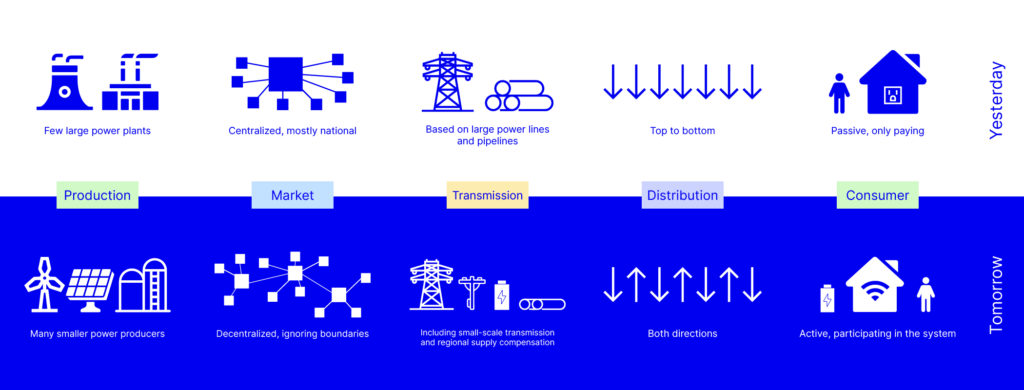Problem
In Estonia, electricity is still largely produced from oil shale, which has a high environmental impact. In order to increase the share of renewable energy, specific places are needed to capture wind and sun and to build renewable energy parks for the production of green energy.
We started with the experiment of creating a community energy model in an economic environment where the price of electricity was stable and additional renewable energy sources rather indicated a decrease in the price of electricity. The main problem we started solving was NIMBY (not in my backyard attitude, i.e. opposition to renewable energy parks in the immediate neighborhood), reducing the share of electricity from fossil sources and involving citizens in distributed energy to democratize the electricity market.
An ordinary person generally has few opportunities to become a partner in energy production, because it is technically difficult and requires a large investment. At the same time, municipalities do not have the resources to deal with the implementation of renewable energy themselves. Each municipality and community is figuring things out on its own and waiting for someone to complete the project. Currently there is no effective engagement model to guide communities to the green turn.
Creating the community energy model
Our goal was to create an innovative and functional community energy model in Estonia and to validate the created model with a real pilot project in some local municipalities.
The idea of the pilot project was to build the first community renewable energy park in Estonia based on the created model. During the implementation, map the entire process and fix the shortcomings in order to introduce the necessary changes in the legislation. The improved model would enable the communities to prepare renewable energy projects together with the municipality in the future and to produce energy locally and for the locals.
From the legislator’s point of view, the regulatory and legislative basis for creating community energy exists, but no local government has been ready to use it so far.
We aimed to create our specific community energy model based on the legal and business plan. However we could not create it during our given time and because of that, we also couldn’t start with our first project.
Despite that, we will carry on our mission and belief that community energy parks would have a triple positive impact – for citizens, local municipalities and the environment.

In the making of the first community energy park
Our energy cooperative already has 85 members and we are building our first renewable energy park. The financing campaign was open for the members of the cooperative for three weeks and the project was marked full – the average investment amount was 483 euros.
Currently we are establishing the first community park in Kärdla, Hiiumaa. The power of the park will be 13kW (which meets the electricity needs of two average households) and the size of the park is optimized to ensure only on-site consumption. At the moment, it is not possible to connect new production capacities to the distribution network in Hiiumaa. Hopefully Elektrilevi will guarantee the connection within a couple of years, then we will be able to expand the roof park.
Since there are restrictions on connecting to the network in other regions of Estonia, parks must be planned in the coming years to cover local consumption, and selling to the network cannot be taken into account.
In the making of the first community energy park
During the project, Energiaühistu (energy cooperative) made proposals for the construction of community energy parks on specific sites to a total of 24 local governments. In all municipalities, there was a positive reception and a willingness to consider the possibility if it is possible to get a full package of a solution through us, i.e. a legally correct cooperation model, which includes rules from the use of the municipality’s surfaces to the purchase of locally produced electricity from the municipality.
In addition to local governments, we introduced the community energy model to universities and reached an agreement with TalTech to start planning a community park to be built on the roof of a specific educational building.
In cooperation with the Tartu Region Energy Agency, a community energy round table has been launched, where various stakeholders participate – energy agencies, energy cooperatives, ministries, local governments, equipment providers. The purpose of the round table is to maintain a common information space, share experiences and competences, avoid duplication of activities and find common ways to introduce community energy to a wider audience.
Together with the city of Tallinn, we formed a separate working group at the city’s strategy center to develop a suitable cooperation model for the city and the energy cooperative. To create it, we participated in the Innosprint program of the Government Office, which allowed us to keep the working group together and, in the process, agree on the locations of three possible projects. Currently the preparations are ongoing to start the pilot project.
Märt Helmja, EXPERIMENT LEADER
